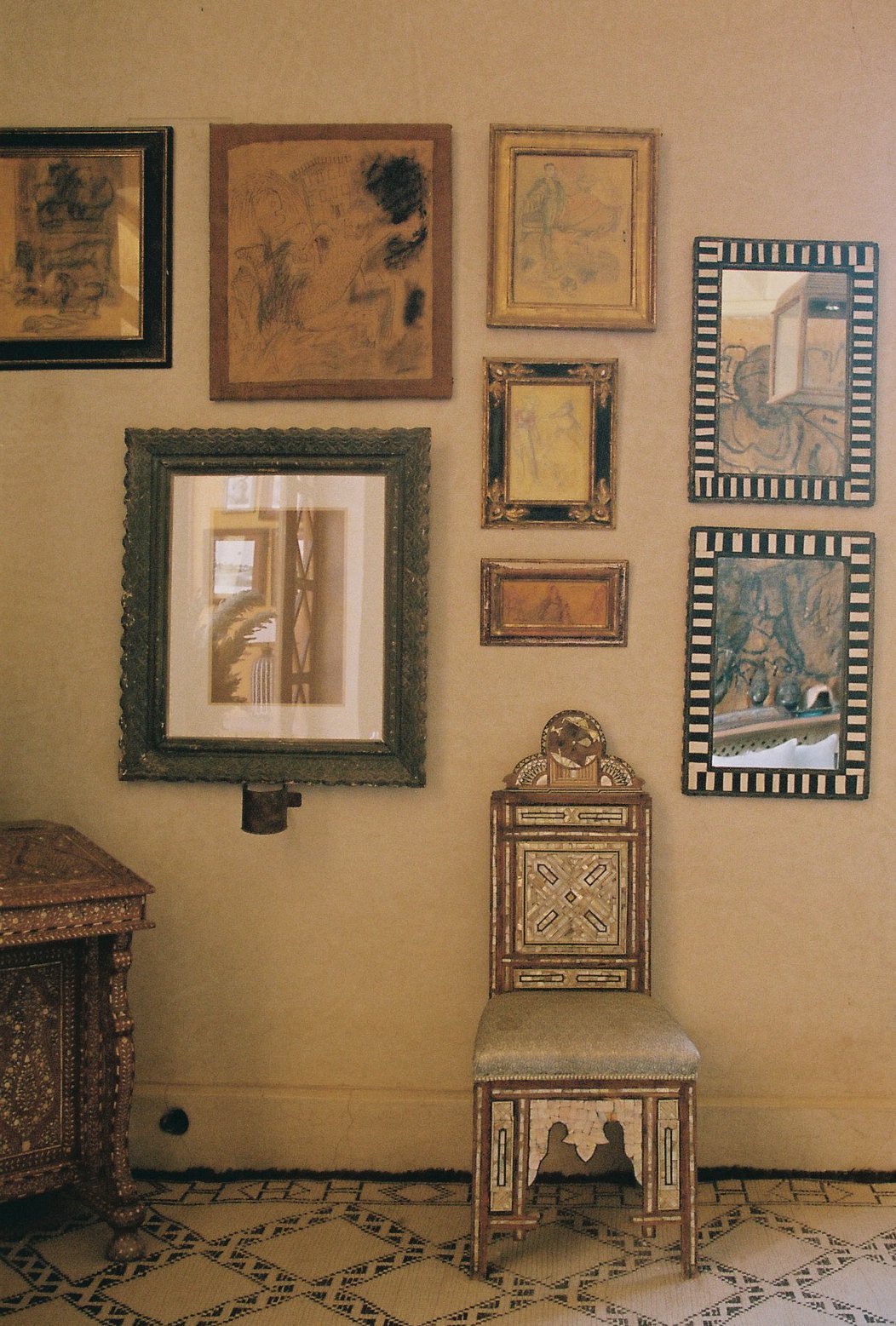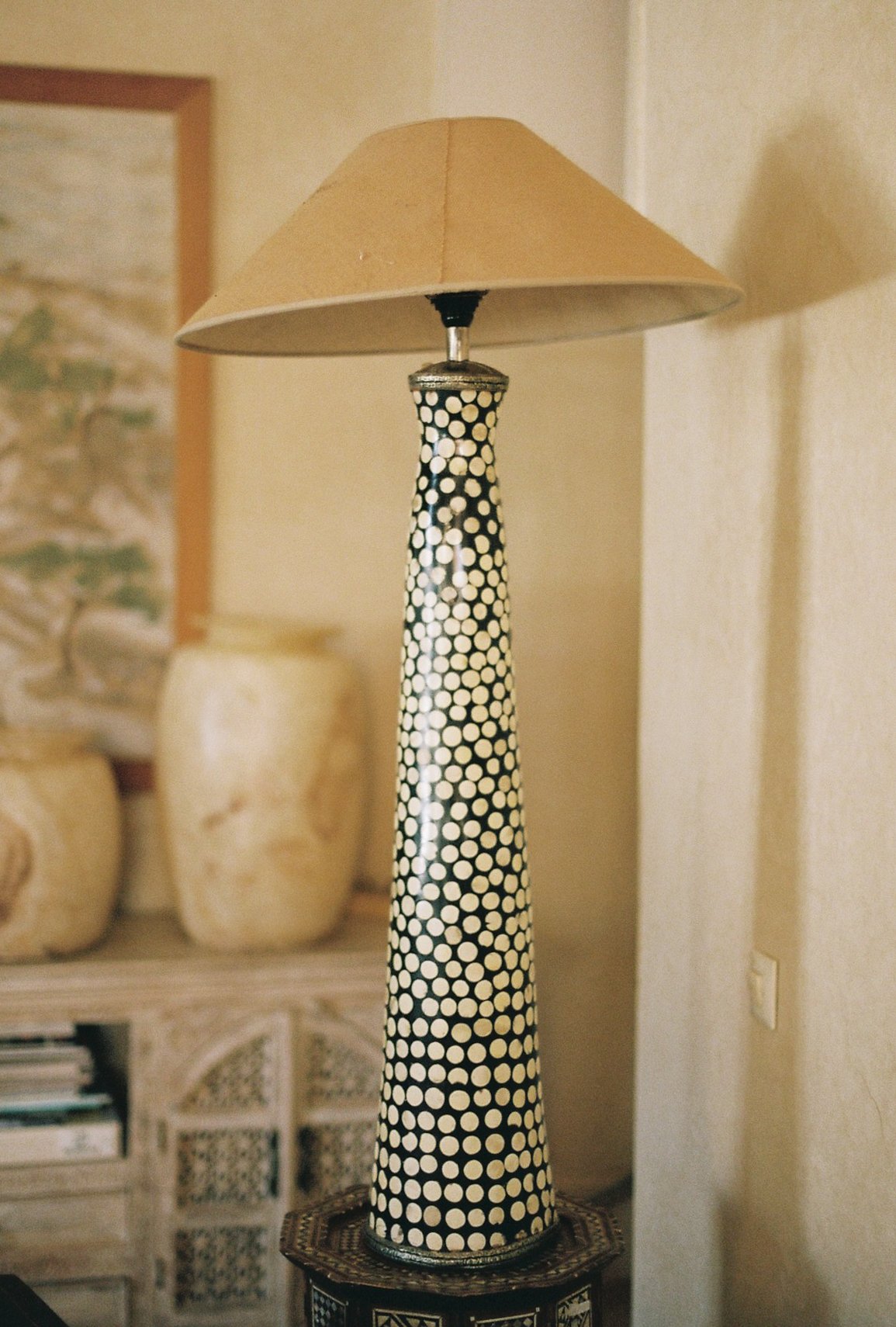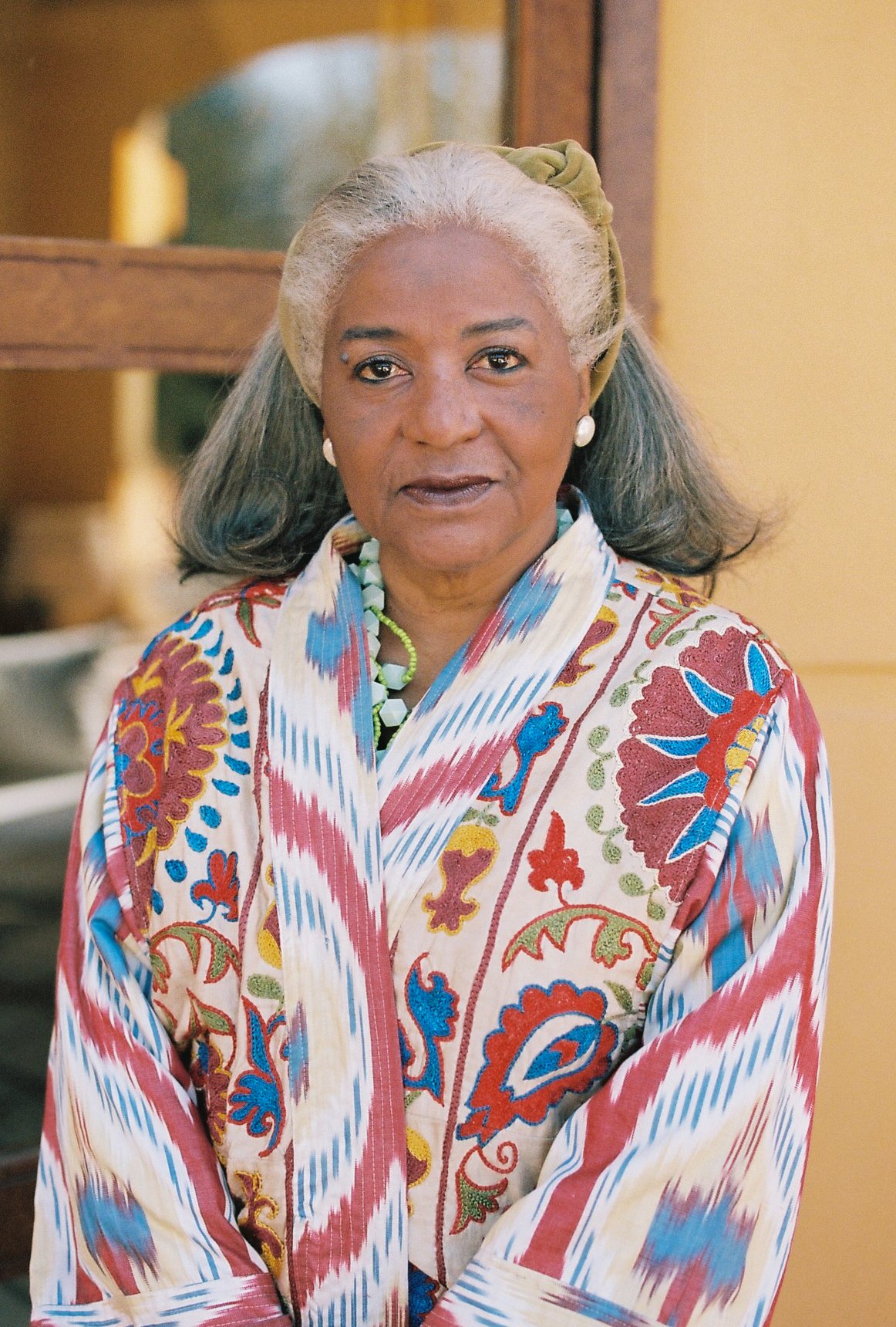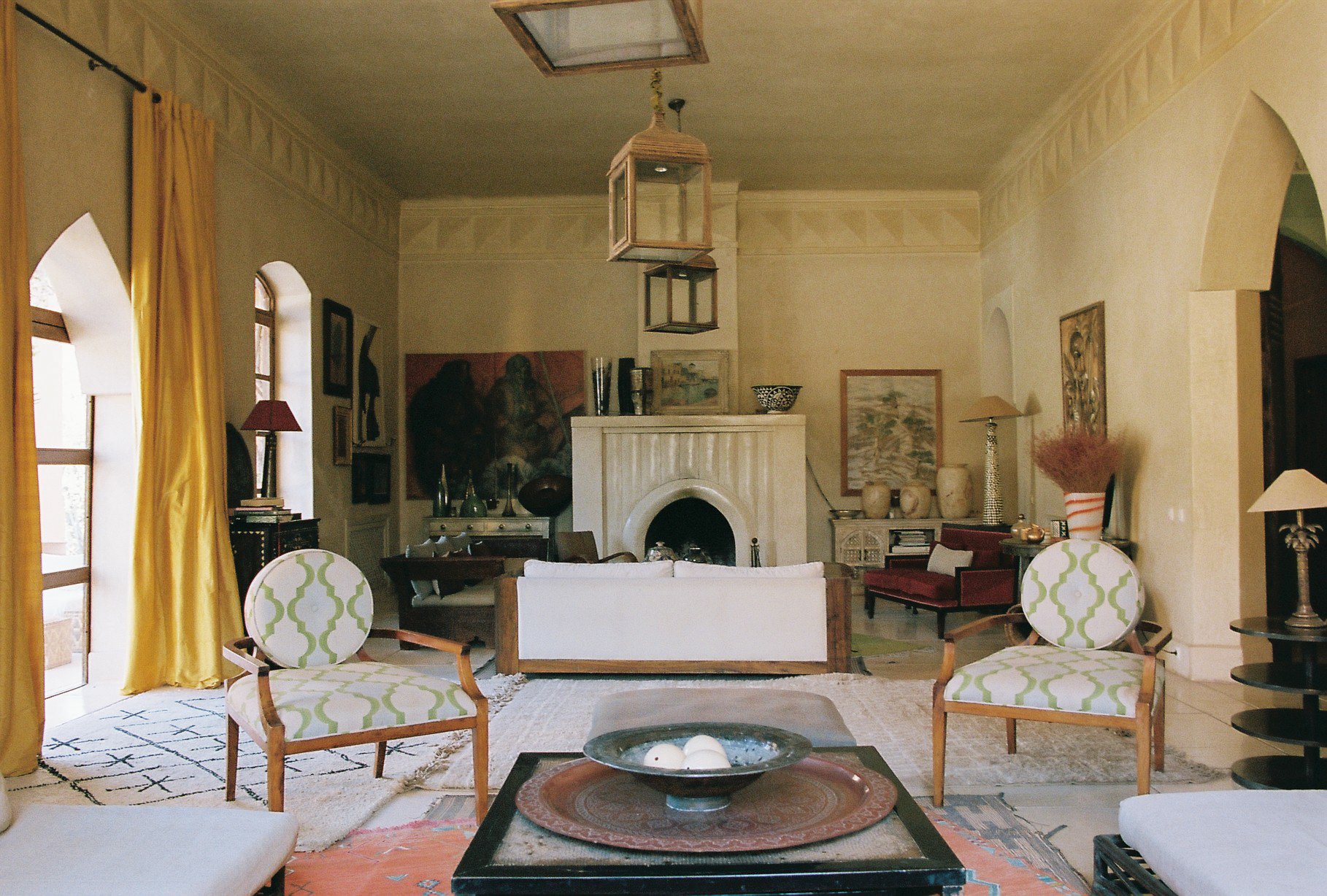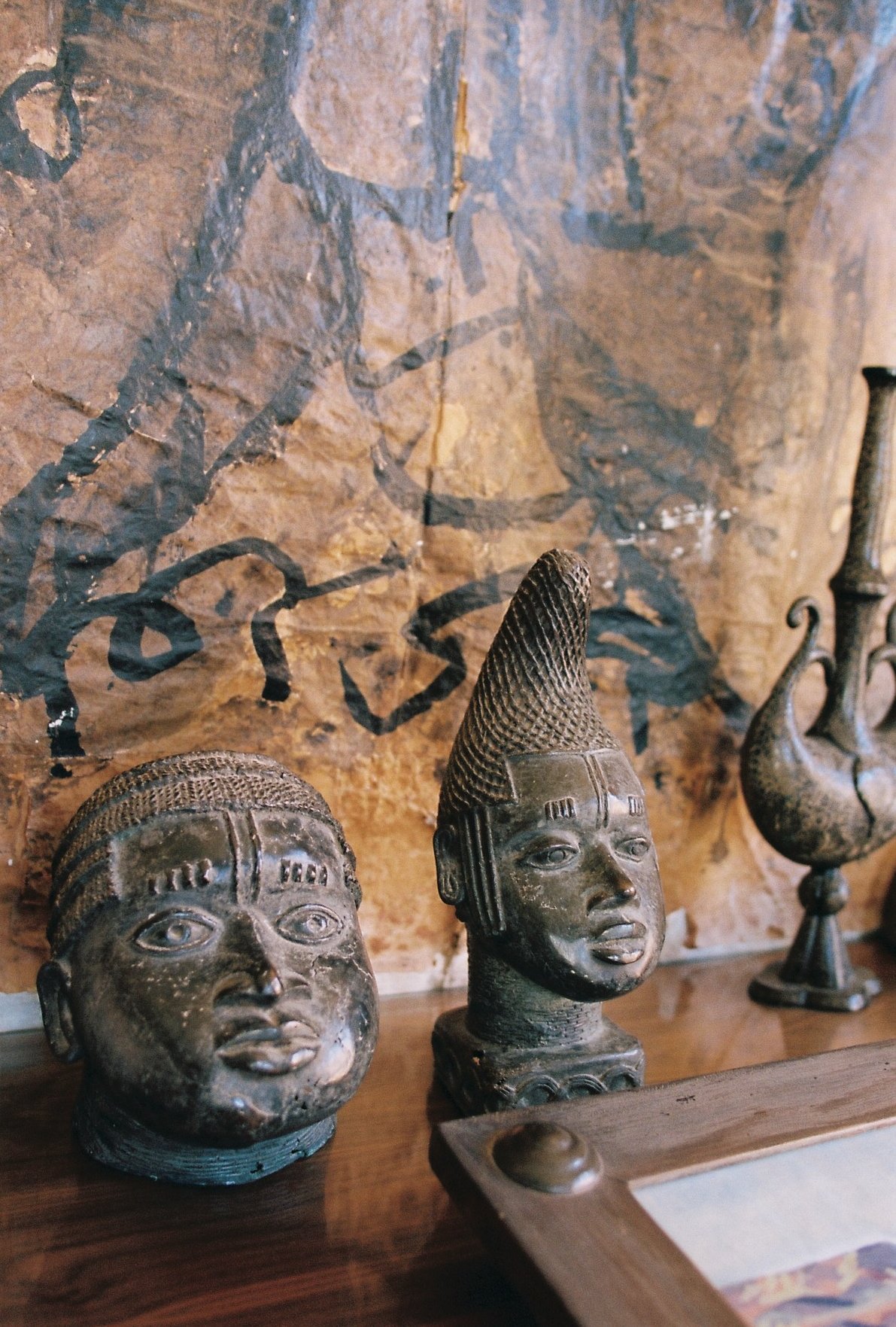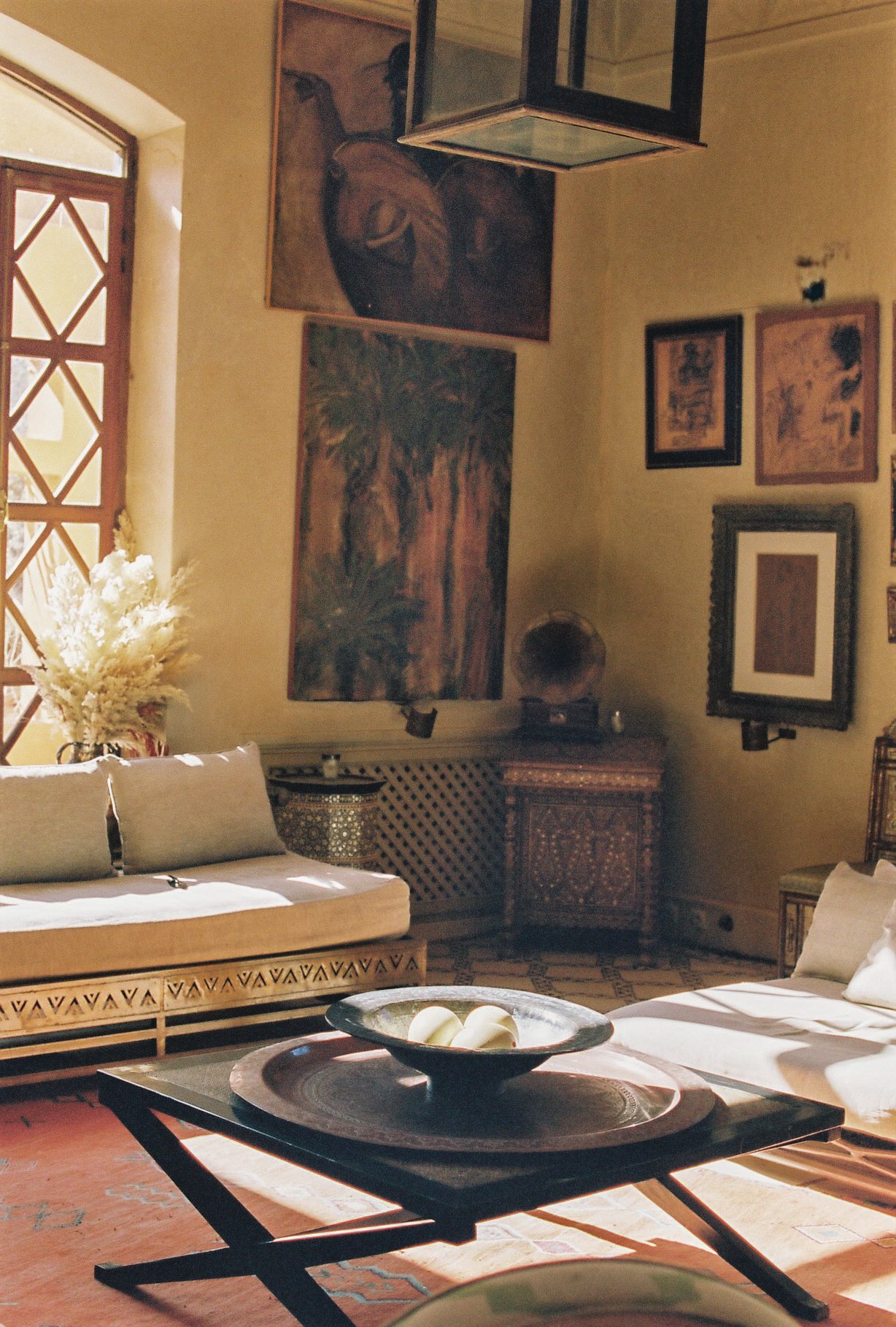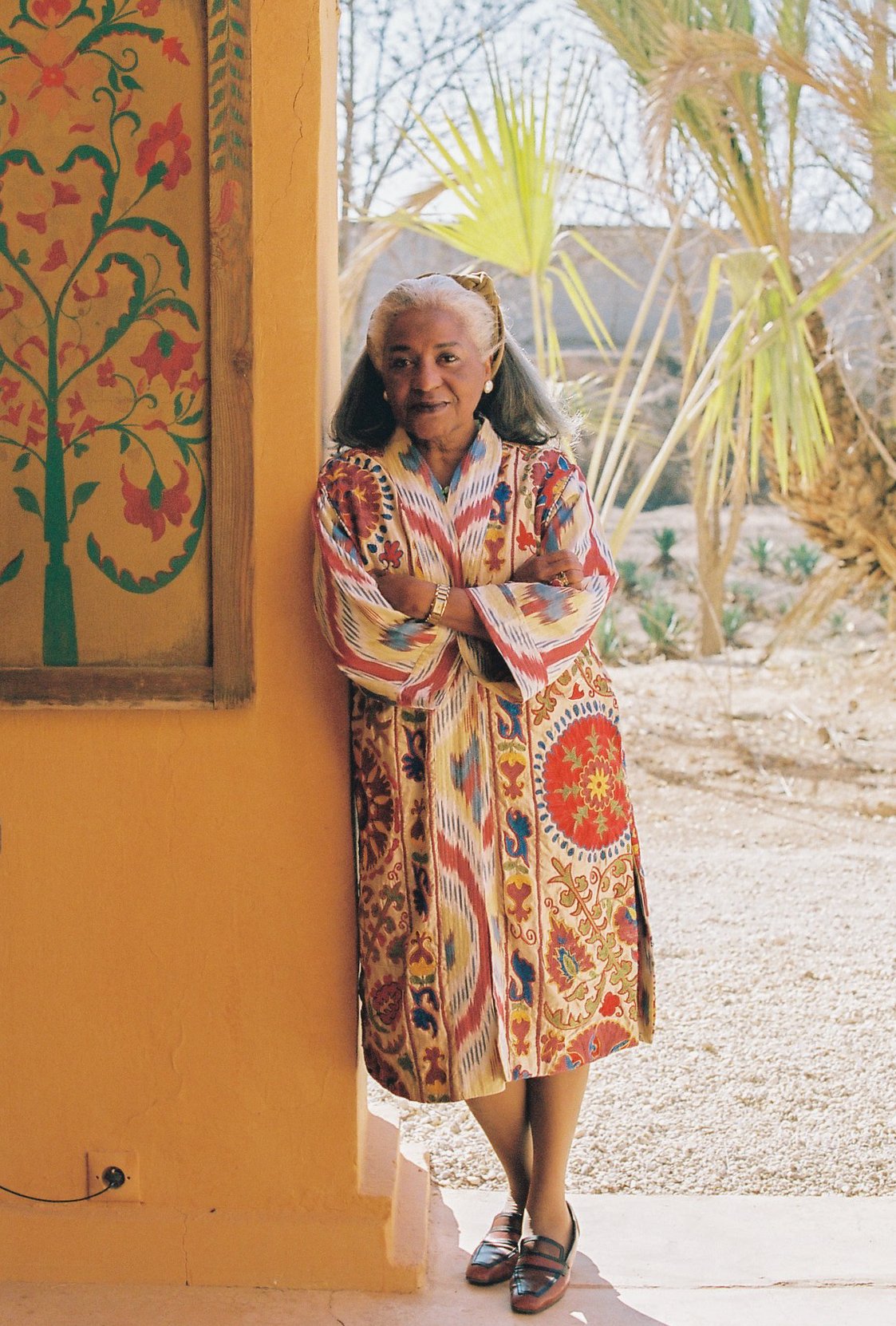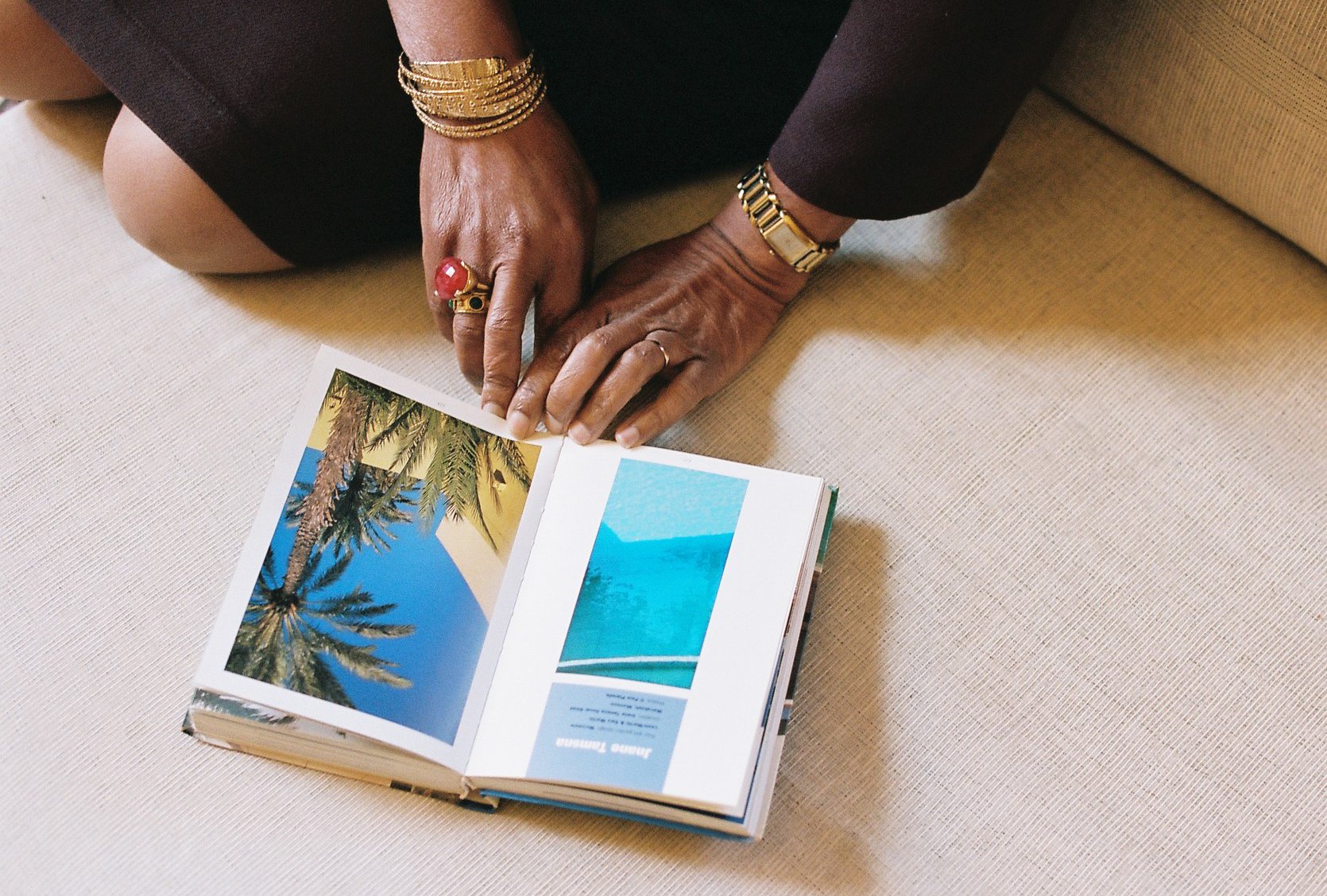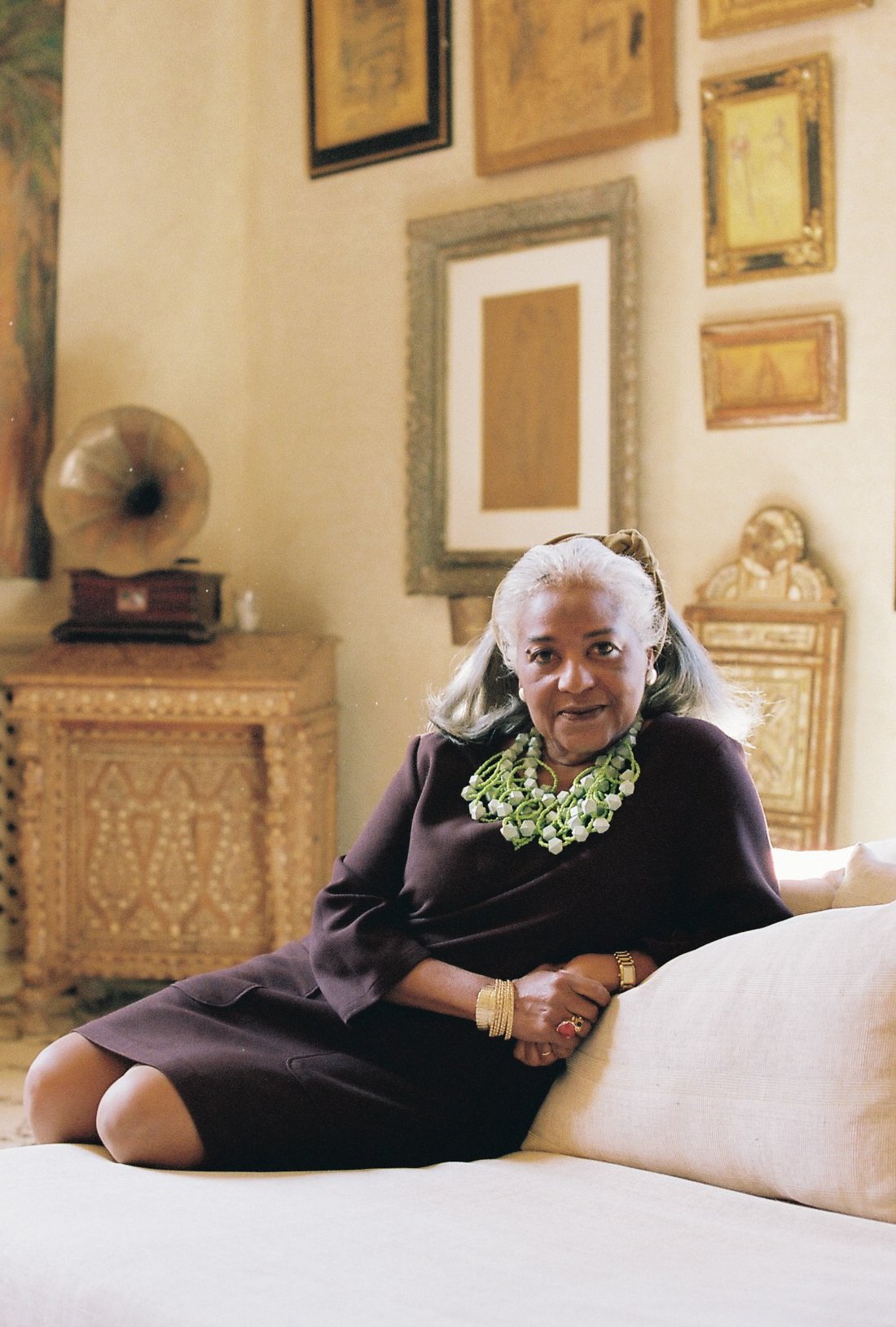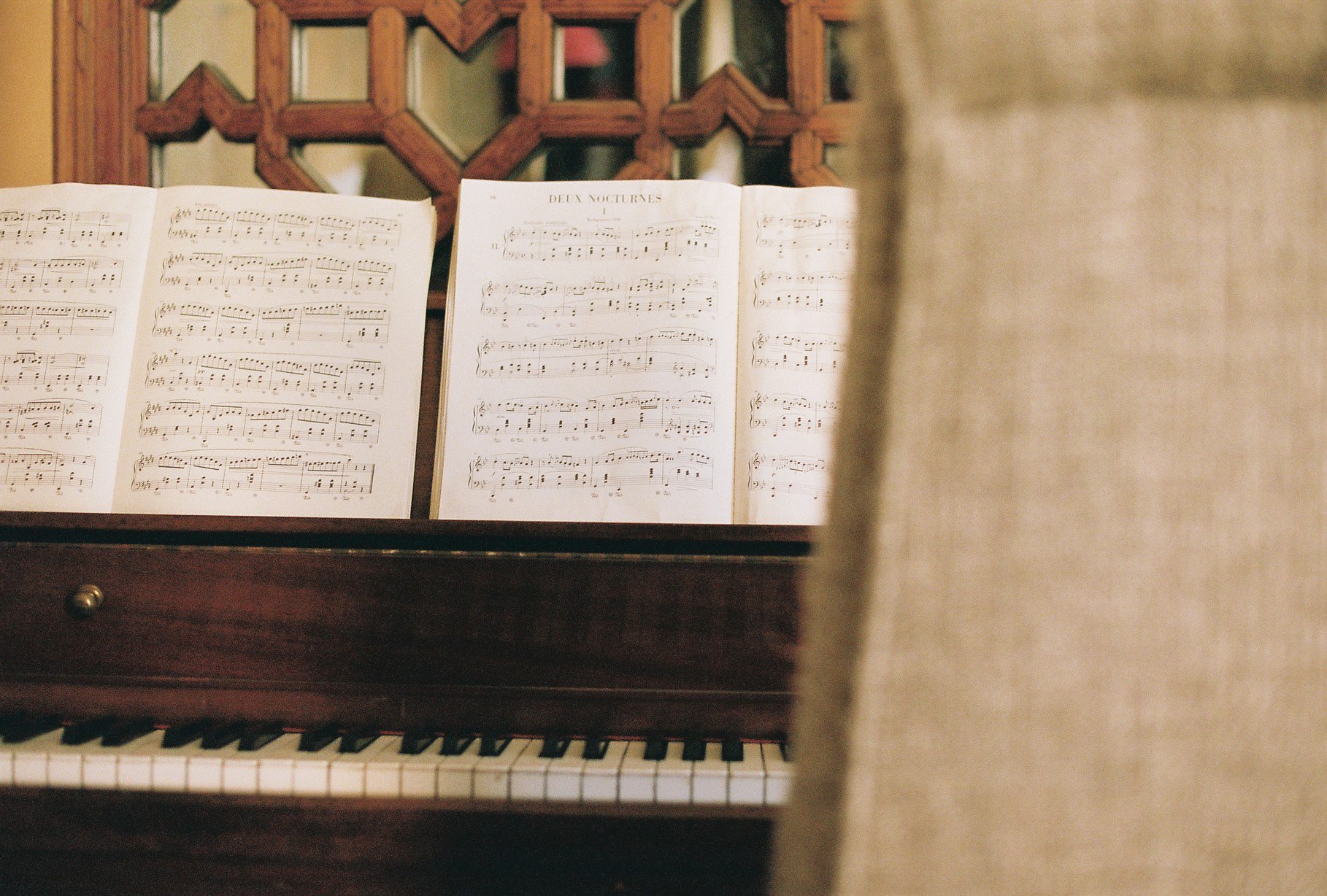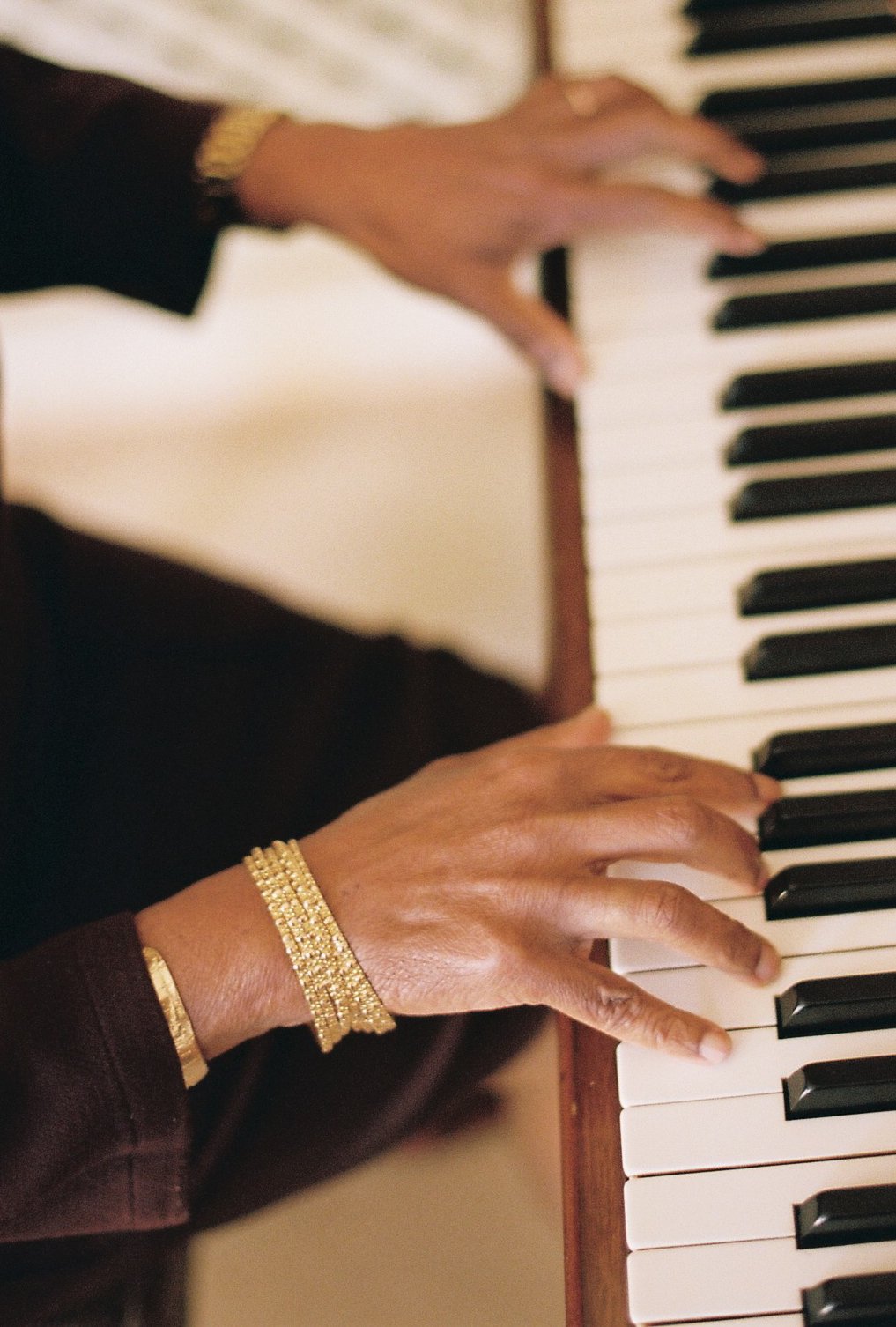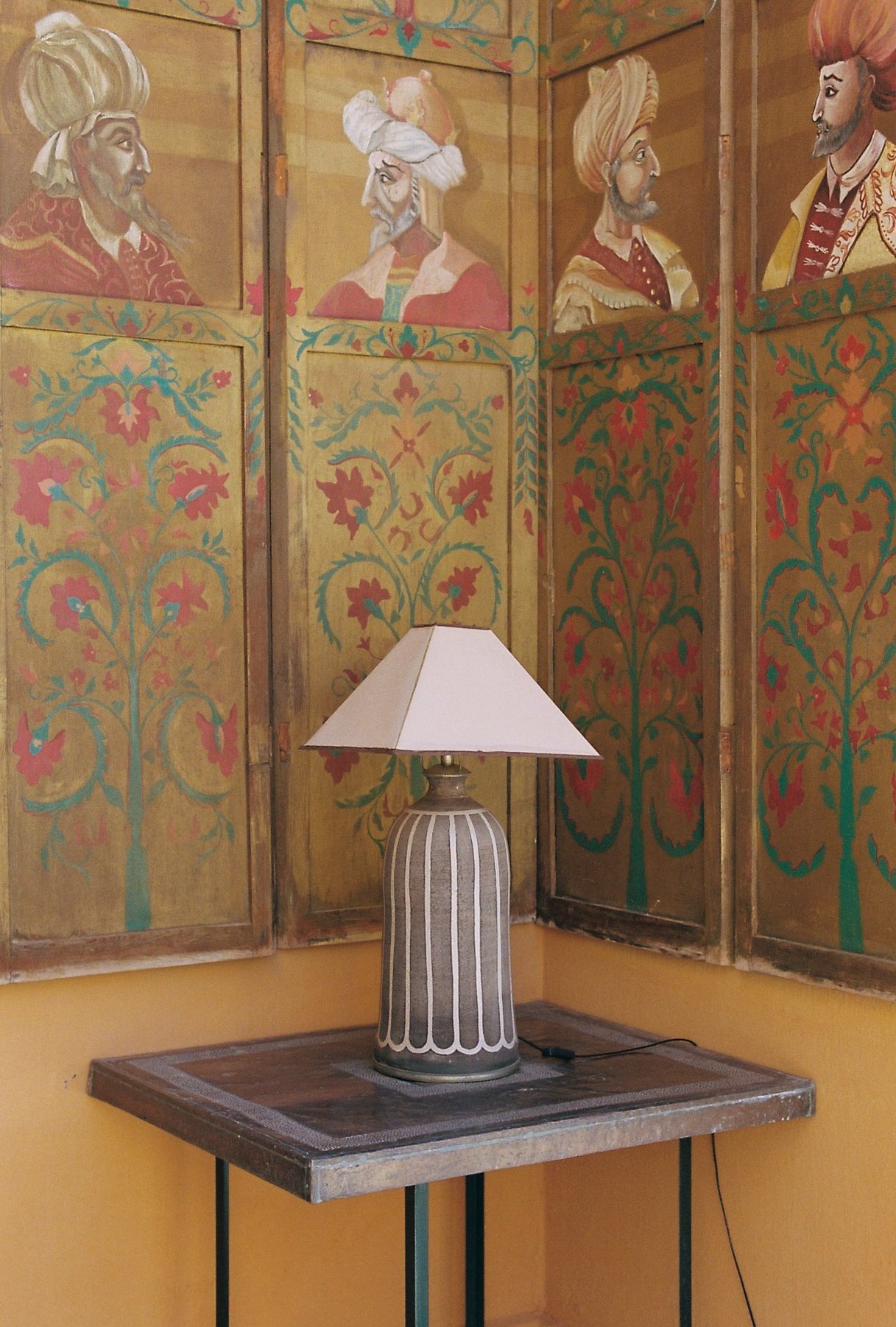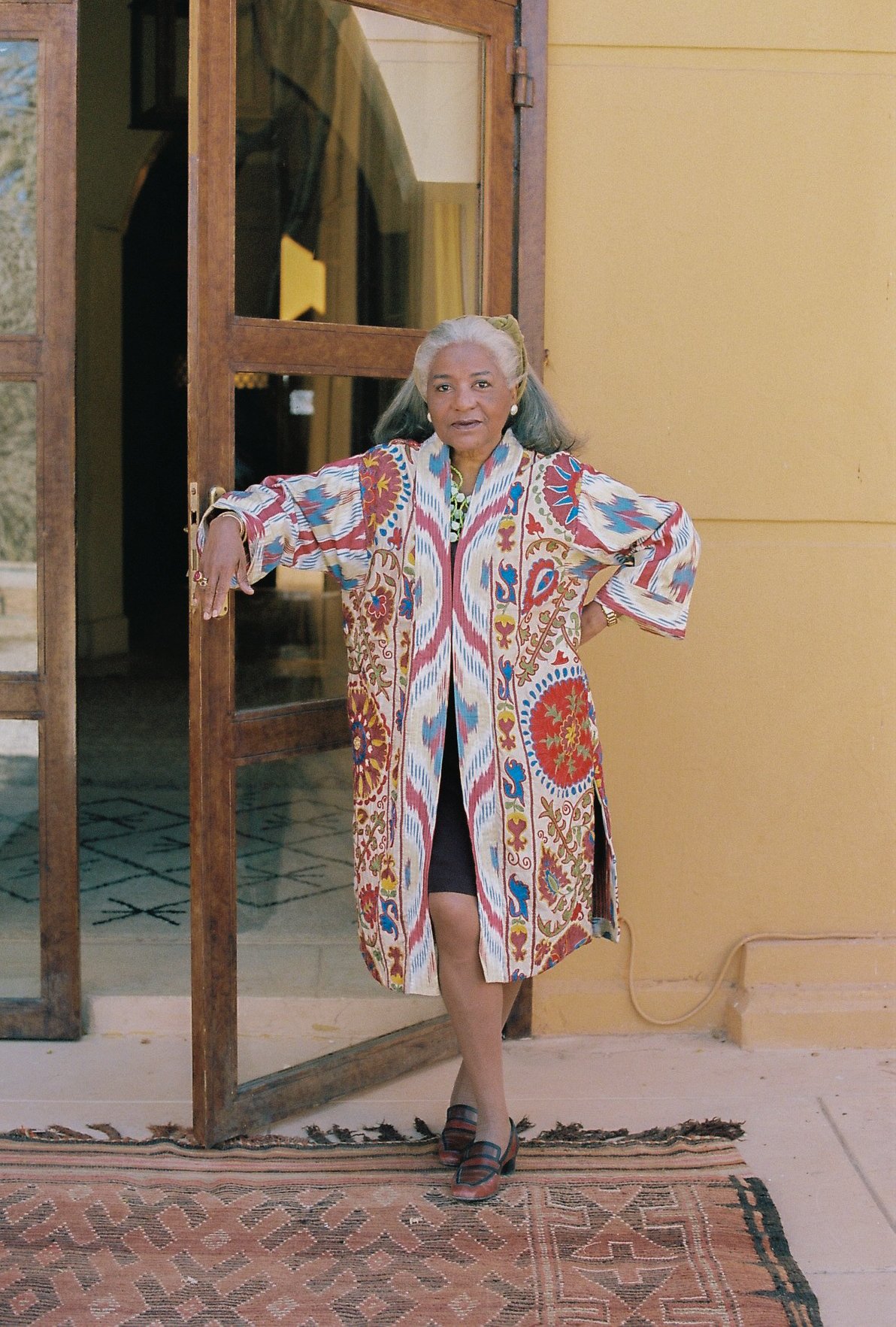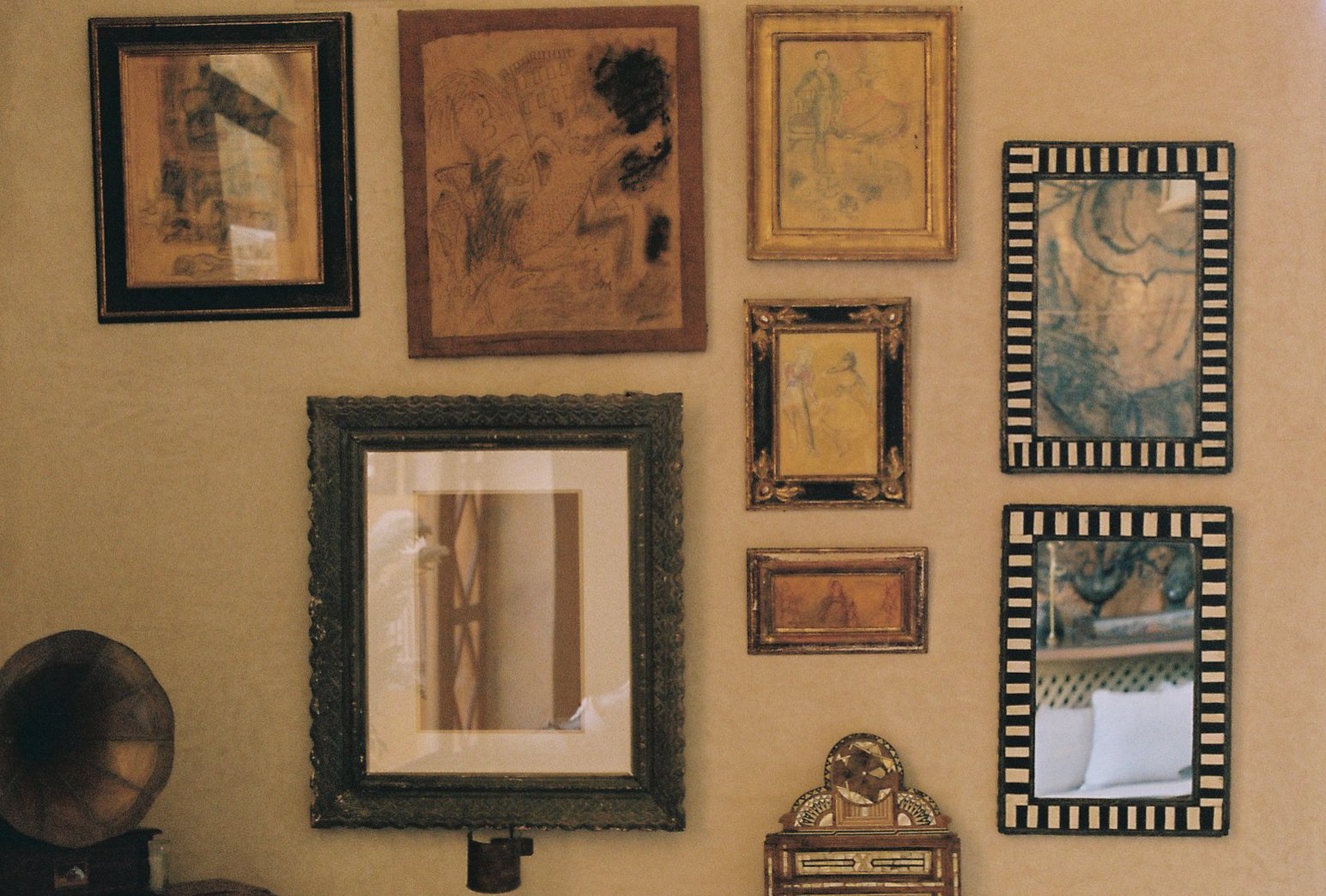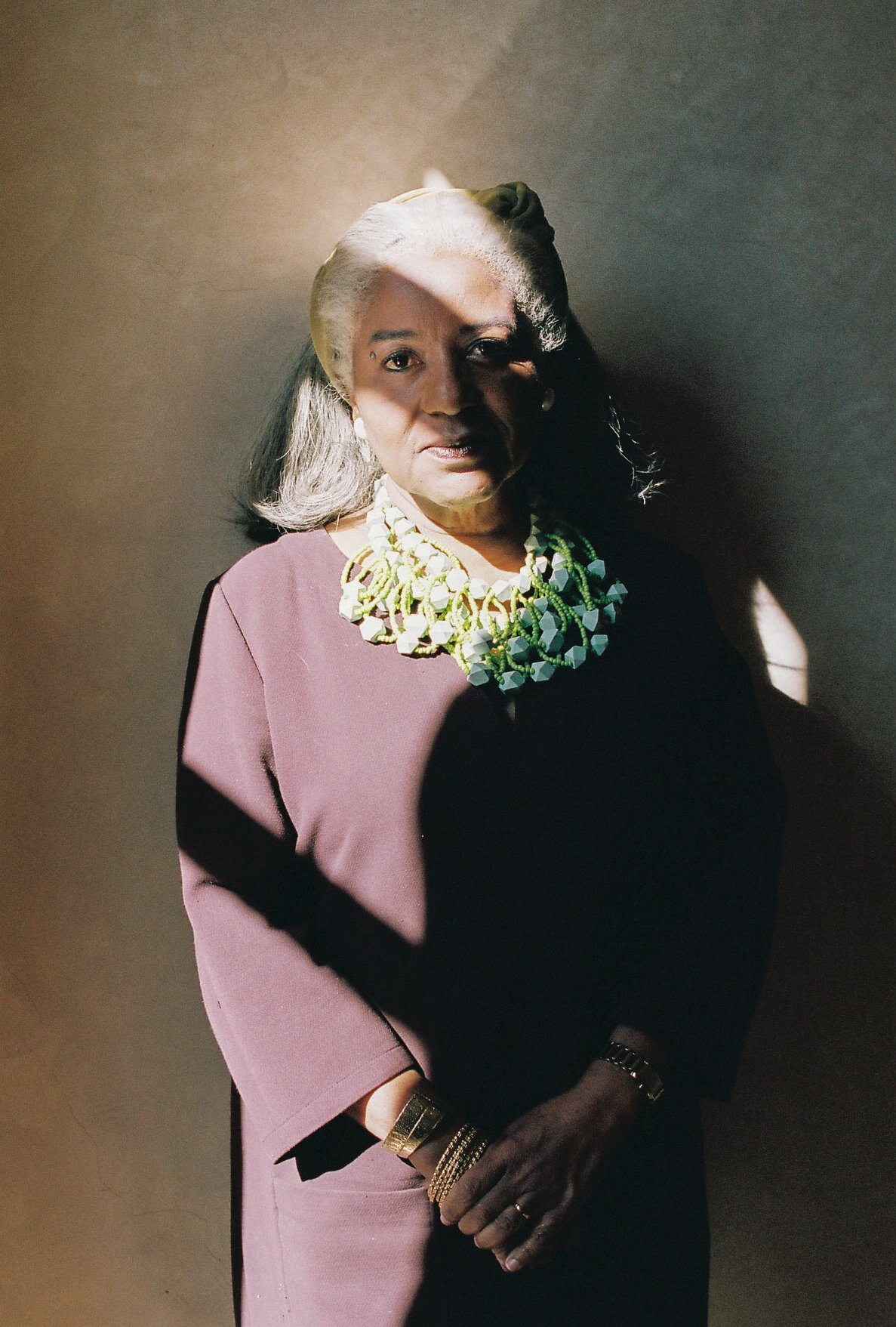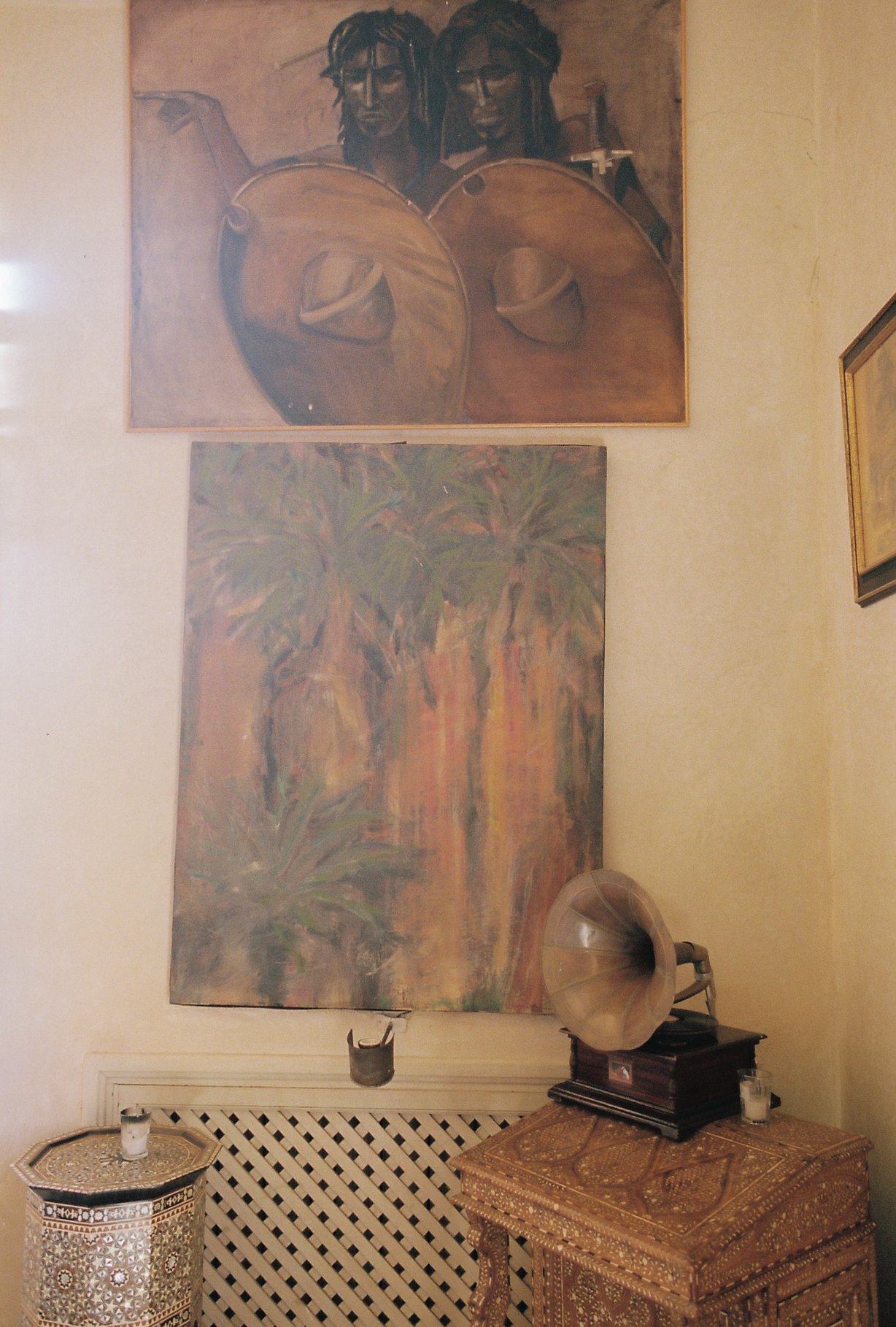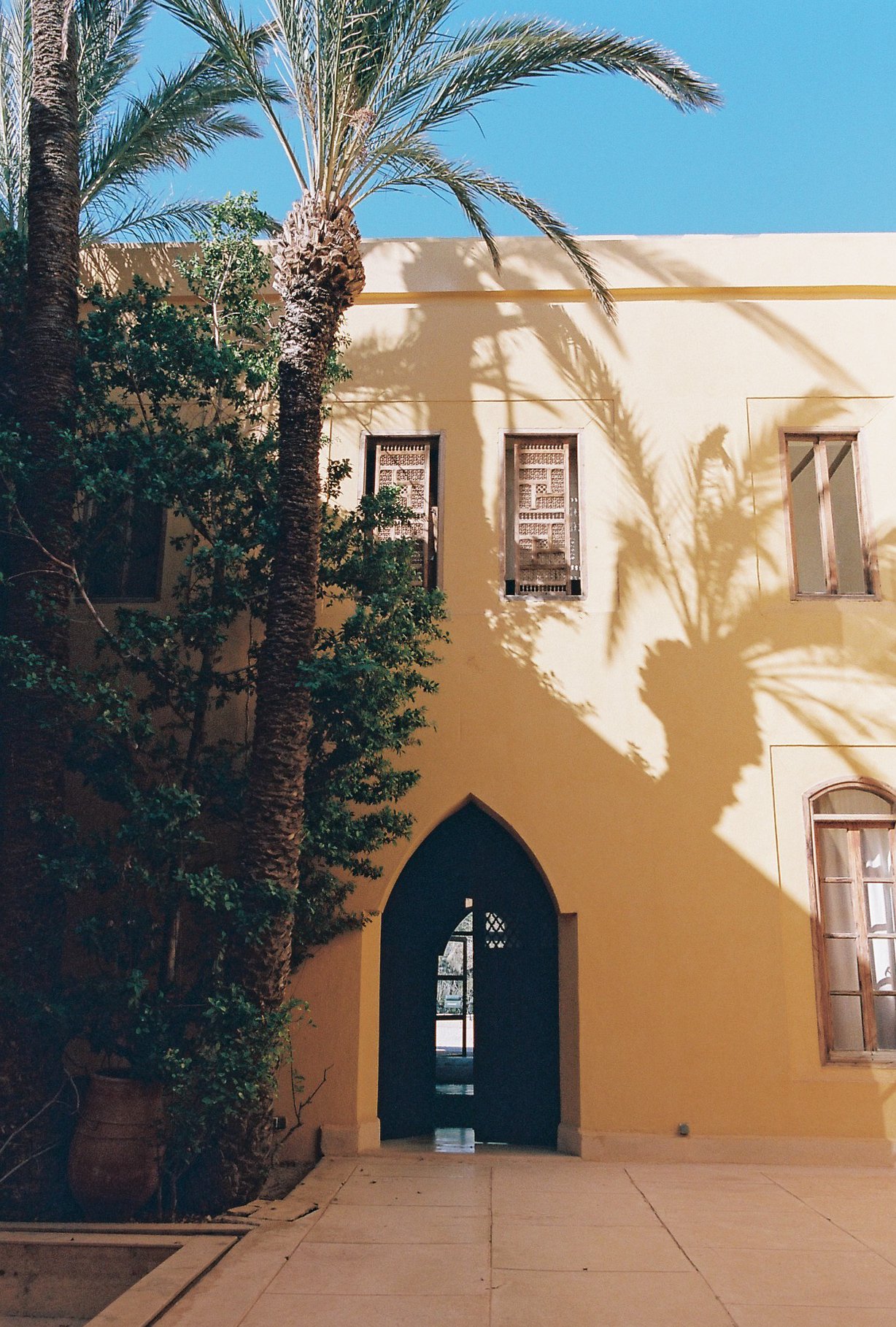Meryanne Loum-Martin’s morning commute is likely the most picturesque of any passerby to date: having made her permanent home in Marrakesh after spending much of her childhood on the go as the daughter of a diplomat, she now walks past palm trees on her way to the office. On the rare occasion that she is not found behind her desk running the first ever black woman-owned boutique hotel in the country or working on infusing client homes with her signature style, she can be spotted browsing small Marrakesh shops for unique pieces and eating out at some of her favorite restaurants. Below, we talk to Meryanne about her definition of home, the importance of independence in marriage, and why, for her, staying intellectually challenged is the key to youth and happiness.
♫ Listen to meryanne’s playlist | ⌨ meryanne’s last google search
on her morning routine
My wonderful husband makes the best coffee that he brings me every day, which I always follow up with a juice of red fruits and ginger. In terms of work, I'm up at 8 am at my computer. Unfortunately, I answer emails from the moment I wake up or start Zooms with people I work with who are not in the same time zone. My workdays are extremely long and I rarely go to bed before two in the morning.
on her childhood and experiencing different cultural environments
I was born in Côte d’Ivoire, but we left I when was four. I always had a very loved and intellectually stimulating childhood. My mother would never treat me like a baby, so I was always part of my parents’ very interesting life and switching between different cultures. We traveled a lot because of my father’s work as a diplomat. France was always part of the equation because every three months we would go there to see my grandparents — and moved to Paris when I was 13 —, but I also always had a very strong love for Caribbean traditional culture, food, music, and history because of my grandparents. Before moving to Paris more permanently, we also lived in London and communist Russia, so I experienced a lot of very different cultural environments early on.
My mother always liked to tell the story about how I first took a plane by myself at two years old. She had to get ready for a Bar exam and had just discovered she was pregnant with my brother. She wanted peace and quiet to study, so she called my grandparents and said that I was coming to Paris. Then my parents took me to the airport, checked who they knew that would be on the flight to Paris (which was a lot of people) and just handed me to them. She called her parents to tell them who I’d be traveling with, but it was so spontaneous. Nothing like now where everything is computerized.
on her earliest memory of wanting to be a designer
I was about 10 years old and we had just moved to London. I would always redesign my bedroom and tell my mother why I think she should move this object to a different spot in our house and so on. I was never very much into dolls and things which little girls usually like, but I was always very interested in accessorizing spaces.
on the objects that have traveled with her throughout the years
I'm not a real collector. My husband wouldn't say that because we are drowning under piles of books and magazines, but I think it’s a very different state of mind. I think if I was to collect things, it would be objects from museum shops because they are always so well curated. When I moved to the Chelsea neighborhood of New York in '82, I took some things with me from my apartment in Paris. I had a specific piece of fabric from West Africa and the bronzes from Benin, which have followed me everywhere, and I also had an Iranian rug from my bedroom. I managed to bring it to my place in New York and loved adding that personal touch. I also found the most beautiful chest at a Salvation Army store in Manhattan for $80. I think that when you don't have a big budget, it's very important to have unique pieces because they immediately give a space character. You don't want to have everything blend in with each other.
on her experience living in Paris as a young black woman
I'm lucky because I never suffered much from discrimination, apart from a few moments that were caused by people having a skewed perception. For example, my husband is a white American with the last name Martin, which is one of the most common names in France. When we got married, even though I was giving him French citizenship, all the administrations that we would go to ignored me — they would look at the blue eyed guy with the black woman and automatically think that maybe I was the immigrant trying to get citizenship.
I was never the object of bullying at school, but there were others. I remember one year where I had a very serious talk with some particularly arrogant girls and made them feel ashamed about how they were treating the other girls who were not part of their social circle. I come from a family of lawyers and one where justice activism is very strong, so being in that environment provided a lot of strength and resilience towards behavior like that.
““Home was in Paris. Home was in New York, home is in Marrakesh, probably forever. Home is where I have recreated my space. I love the sense that home is also in your mind and in your heart, not only where you were born. It’s something inside you. Home can also be with people. I can be in a different country, but with people who are very close to me, I feel at home because of the psychological comfort. It has nothing to do with the physical address.””
on pivoting from law to hospitality
I was still a practicing lawyer in Paris when I came to Morocco in December 85, six months before I met my husband. I had two loves at first sight, and I'm still with both of them. From the moment I set foot on the tarmac, I knew the place would change my life. My mother and father wanted to have a holiday house and they wanted it to be close to Europe. I told them that if they were serious about the project, I want to look for the land and be in charge. Once a month for about a week, I would be in Marrakech working on the construction site. It was everything I had always wanted to do: to connect architecture and design with a cultural heritage. A lot of my friends would come and visit while I was there and I would always listen carefully to their comments about Morocco and reasons why they were unhappy with the way they would spend their holidays. I realized then that there was a niche market that wasn’t being addressed currently, which made me go back to my father and suggest making a business out of the house. He liked the idea, so I threw a big party in '89 with friends flying in from all over. When they went back to wherever they were working, they spoke to their bosses and suggested my property as a place to bring the board or to treat clients. That’s how it all started.
on her design process
I would say that my process is mainly thinking about enlarging a space and giving it life, color, and personality, but it also depends if the space is already built and nothing needs to be changed because you can’t alter the structure. All of my thinking and planning happens at the same time because the process itself is a constant inspiration. When I walk into a space that I have to design, images about colors, volumes, and how I’m going to enhance it usually come to me. I love mirrors, because I love the way that they create depths in a room that can also highlight things that you want to be reflected. We have a lot of big mirror walls in the garden here.
I also like having blueprints of the floor plan and taking photos because they help me with the height and volume. Blueprints are key to understanding how you want to organize circulation and where you want to place furniture. There are many unexpected ways to put furniture in a room. Like, why should the sofa be along a wall? For me, a project is done as soon as I put in the books and flowers. Something which is very important for me is to ask the client for some family objects or furniture that they would like to integrate in the design to implement their personality. I would personally hate to be living in a house which I feel is not connected to myself.
““My mental health through intellectual achievement is extremely important to me. It’s from there that I get all my strength. I think that one of the key things in our family is that we’re never intellectually bored with each other. My husband is an academic and the kids are quite brilliant. We always have interesting conversations.””
on how a trip to India in her 20s changed her life trajectory
I never used a backpack because I thought it created a distance with the locals. I just had a bag with some very elegant clothes (which didn't need to be ironed) and very casual ones because I wanted to be prepared for anything. I was traveling by train and bus and staying in places which cost $5 a night. Then I would treat myself to a fancy address, and one of them changed my life: the old house of an Indian Prince in Jodphur, probably the first heritage hotel in India. It was beautiful, all kept in earth colors and with candles everywhere at night. The first evening I spent there, I sat at a table for solo travelers with only older, eccentric English women. I was the only one who was black or young. Suddenly, the hotel owner, who was a prince of Jodhpur, and his family walk in. He came up to say hello to the table and spoke to me in Hindi, but realized I didn’t speak the language and asked where I was from. Once he found out I was traveling alone, he said ‘You leave this table and you come sit with my family.’ From then on, he organized my trip. It was fascinating because I was really adopted — it totally opened up new horizons to me about how you can connect local cultural heritage to a curated touristic experience.
That trip prepared me for what I was going to do in Marrakesh at Jnane Tamsna and totally structured my approach to everything I've been doing since. The experience was about true hospitality and luxury, which is not something that money can buy. I realized that culture is the most important factor in everything you do when it comes to tourism. It's about connecting cultural heritage with the curiosity of the discerning traveler.
on what she’s reading
I have a collection of around 25 years of architecture and art magazines and monographs. They’re often about Moroccan style like the ones by André Paccard or New Moroccan Style by Susan Sully, but I also read a lot about architects like Geoffrey Bawa. I usually like history books or memoirs, but a few other all-time favorites are The Humbling by Philip Roth and Heroes by Stephen Fry.
““I think the key to our relationship is that we are totally independent. When we travel together, we both do things that interest us individually and then have dinner or lunch together to talk about what we’ve seen. Most people would do things together because they are a couple, but from day one of our relationship, this was never going to be the case.””
on meeting her husband
We met in Oaxaca, Mexico. It was on August 13th, '86, around noon. I had just taken the New York Bar exam after training as a lawyer in Paris and decided to treat myself to a trip to the closest country I didn't know. It was either Mexico or Canada and I thought that Mexico would be more exotic. I wanted to visit a site called Palenque and the buses were starting from Oaxaca, so I was only there for 24 hours. We bumped into each other at a cafe. I was meeting a friend there and I noticed him. He was sitting at a table reading his mail. I felt like I wouldn’t have an opportunity to get to know him because I was only there for a day, and was scared he’d think I was with his French guy who was just a friend. I thought life was so stupid because I knew he was someone very special.
He just stood out. This man with his very simple white shirt. There was something incredibly attractive about him. I could feel that he was brilliant. I could feel that he was humble. He was a good-looking man, but there was no arrogance — just something extremely peaceful. Our eyes had crossed earlier and it was one of those immediate connections. I was so glad that once we sat down, he came to our table and he said, “Oh, I heard you speak French. I know the area very well. You are probably tourists if I can help you with anything.” We then had a long-distance relationship for two years where we would meet every six months for a week or so.
on the significance of hosting skills and sociability
The first thing to make people feel at ease when you host them is to introduce them to others. When my parents were having parties at my house as a child, I would see my mother’s art of introducing people to each other, knowing that this person might be especially interested to meet this one because they had things in common. It was a total instinct. I have been really shocked sometimes to go to houses of people considered ‘socialites’ and see the lack of sociability they had. They simply didn't introduce people to each other even though a few guests were shyly standing in corners. When that happens, your task as the hostess is to take that person by the arm and make them aware of shared interests with other guests — once they feel connected, you can leave them to the conversation. But it’s not just about ushering them to the bar. It's making human connections which is the most important.
““A lot of my trips felt like they were just meant to be. I went to a place where I knew nobody and bumped into people who would teach me so much. And I’m a person who always likes to learn.””
on how ageing has affected her
I feel the emergency to do everything I want to do. My father is going to be 99 and my maternal grandmother passed at 101, so I hope I have good genes on both sides, even though my mother died of cancer when she was young. I really feel that there are a lot of things I still need to do because they take time and I want to enjoy them fully. I have a lot of energy and I don't feel my age, but I can see that my face doesn't look the same as it did ten years ago. What helps is that I work on such creative projects that in my mind, I could be 40. I think that as long as you have things intellectually challenging, you can stay very young in your mind.
on her personal style
I'm a no logo person. Even if I was extremely wealthy, you would never see me wear something with a logo. I'm more interested in discovering little-known artists and channeling more business to them than buying things that everybody can buy. For me, luxury is uniqueness. Right now, I am wearing a ring that everybody compliments me on which I found on Portobello Road in London and another one from a French designer called Sylvia Toledano. My bracelet is part of the skeleton of an armadillo and was made by a friend of mine called Gogo Ferguson. I've been wearing it every day since November 2000, which is when we did an exhibition of her work in Marrakesh. My shoes come from a little shop in Paris that imports small, unknown Italian brands. With age, I’ve come to appreciate very comfortable shoes over high heels — these ones I’ve been wearing every day for four or five years. Another staple of mine is the headband. I don't like the wind to mess up my hair and it's easy enough to just put it on and go.
meryanne’s favorite spots in marakkesh
Restaurants: Plus 61, Bô Zin, & L’Ardoise Du Marche
meryanne’s favorite spots in paris
Restaurants: Jaïs, Marrow, & Le Paris 16
images and interview by clémence polès, edited by claire brodka



